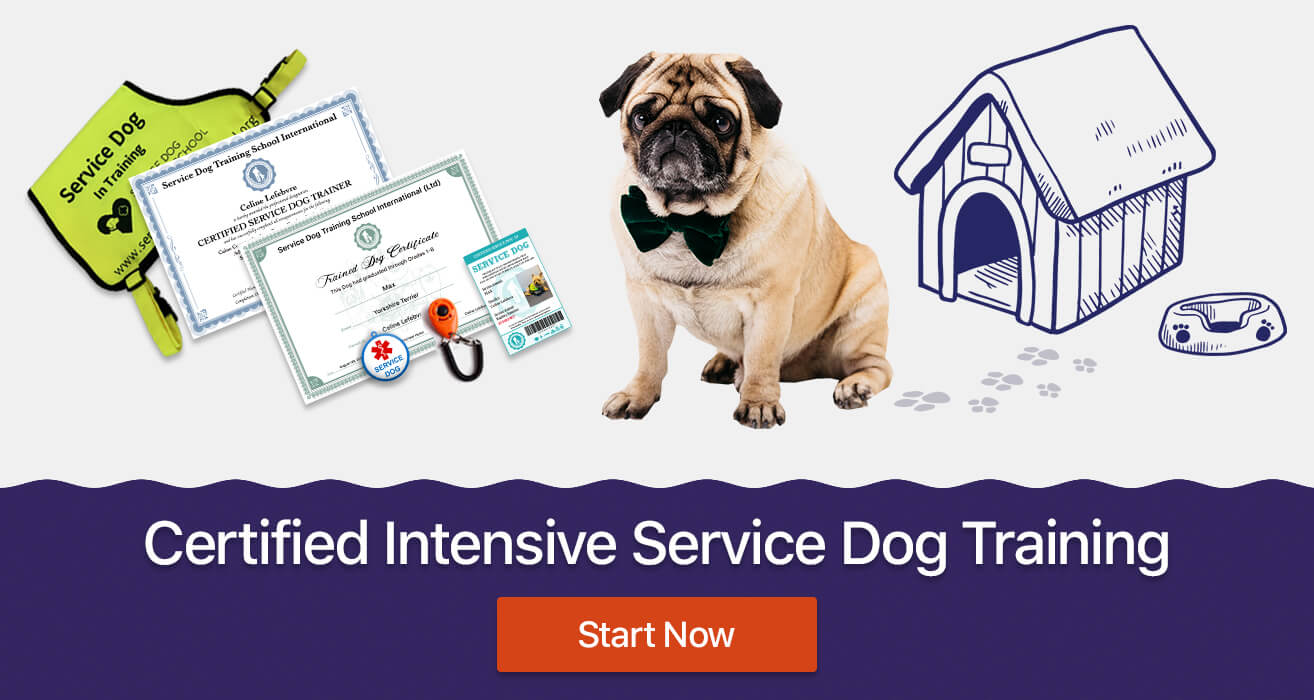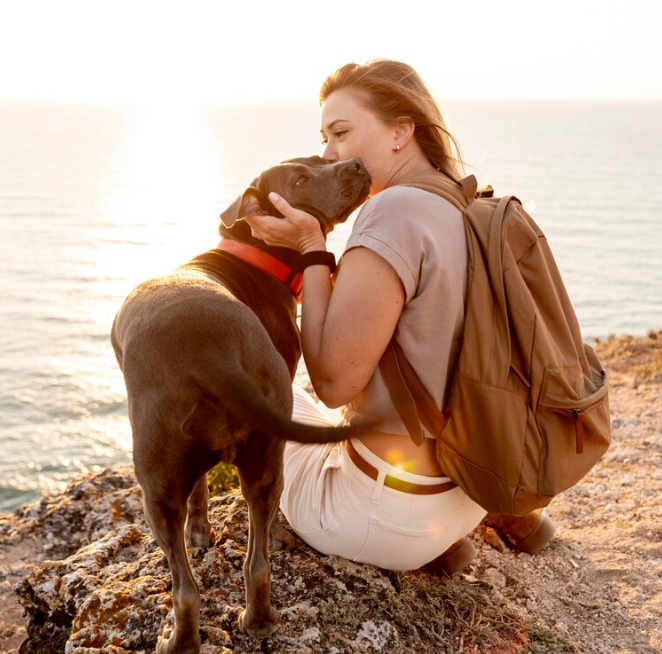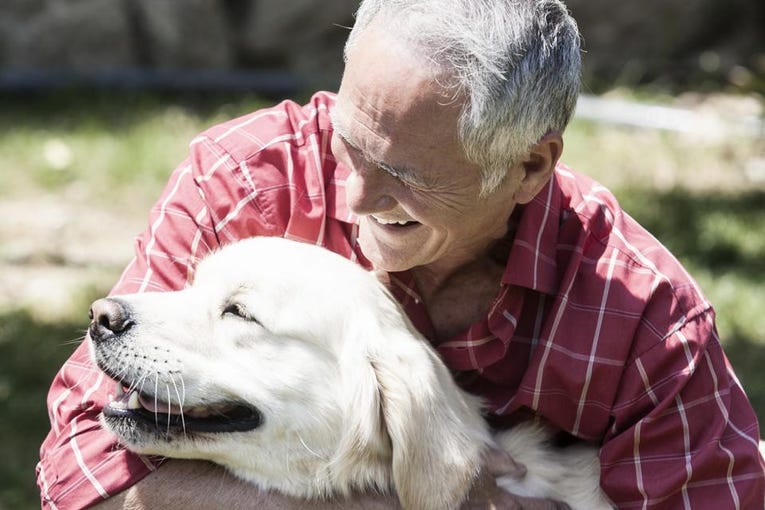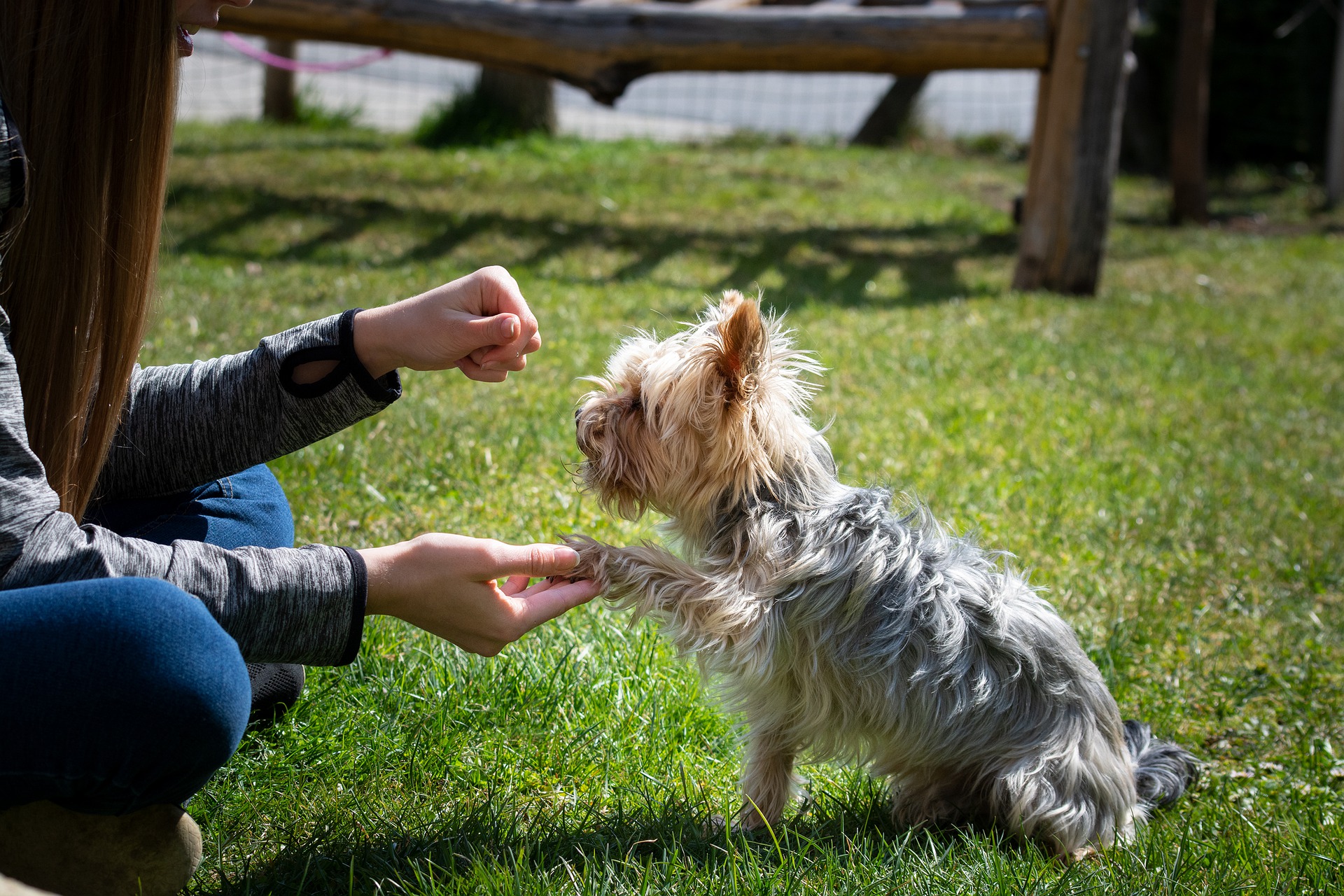
A clicker is an inexpensive plastic box with a metal strip inside which makes a quick, distinct clicking noise when pressed. This is an alternative and effective positive enforcement for dog training. Many dog trainers use a clicker when rewarding with a treat to show your dog the clicker is a good thing and when they hear it, they are doing something right. Once your dog understands the clicker is a positive thing, it can then be used for more advanced training.
Here is how to use a clicker when training your service dog:
No.1 - Showing your dog that it is a good thing.
It is very important that your dog knows the clicker is a positive thing or else it is useless. They should know the noise of the clicker means they are doing something right and will be rewarded.
A simple way to show your dog this is by introducing the clicker slowly. When you first get the clicker, call your dog, press the clicker and immediately reward it with a treat. Repeat this a few times. Then, get your dog to do a simple trick it already knows, like giving you its paw. Once they do it, press the clicker and reward them with a treat. It is recommended that for the first while using the clicker you reward with a treat afterward. This is so your dog knows the clicker means they are doing good.
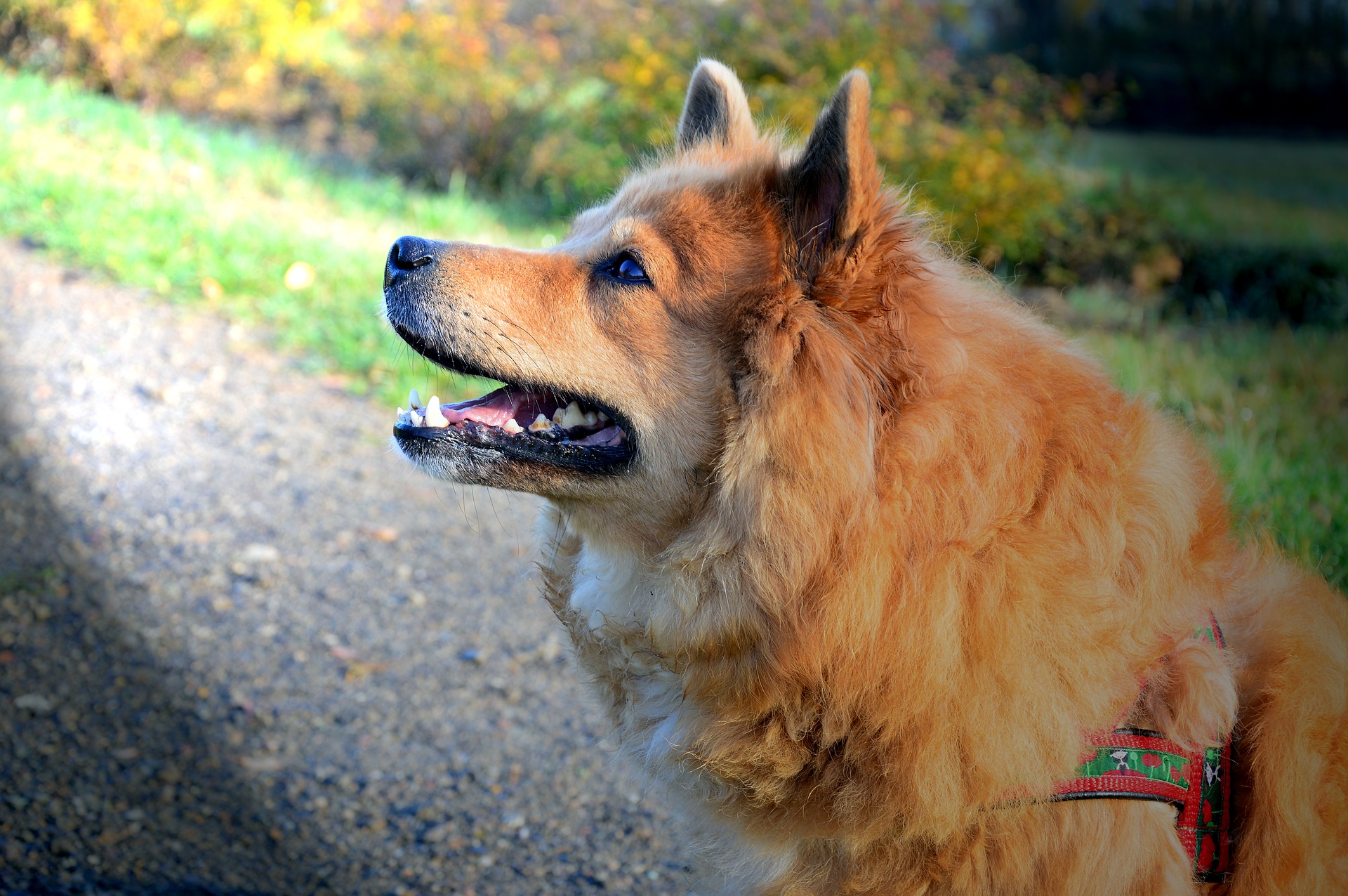
When your dog becomes familiar with getting a treat afterward, reduce the number of treats you give and praise them with your voice instead to show them you are happy. This will also show them the clicker does not just mean a treat is on the way, but the clicker is telling them they’re right! You know your dog is ready when you press the clicker when they are not paying attention to you and they come to you looking for a reward.
No. 2 - Advanced Training
When moving on to more advanced training you should begin in a quiet place without distractions. You should also keep training sessions short as you will see more results in multiple shorter sessions than in one long, boring session. The clicker is an excellent way to train your dog in more advanced skills step-by-step without having to manipulate your dog into positions. Once your dog knows that when you click they are doing something right, you can use this to your advantage by doing a step-by-step training process. You click each small step at a time until your dog gets the hang of it and knows what you are trying to get them to do. This may take a bit of time, but it should be much quicker than trying to get your dog into position yourself. This will also allow your dog to figure out the movement itself, which is excellent dog training.
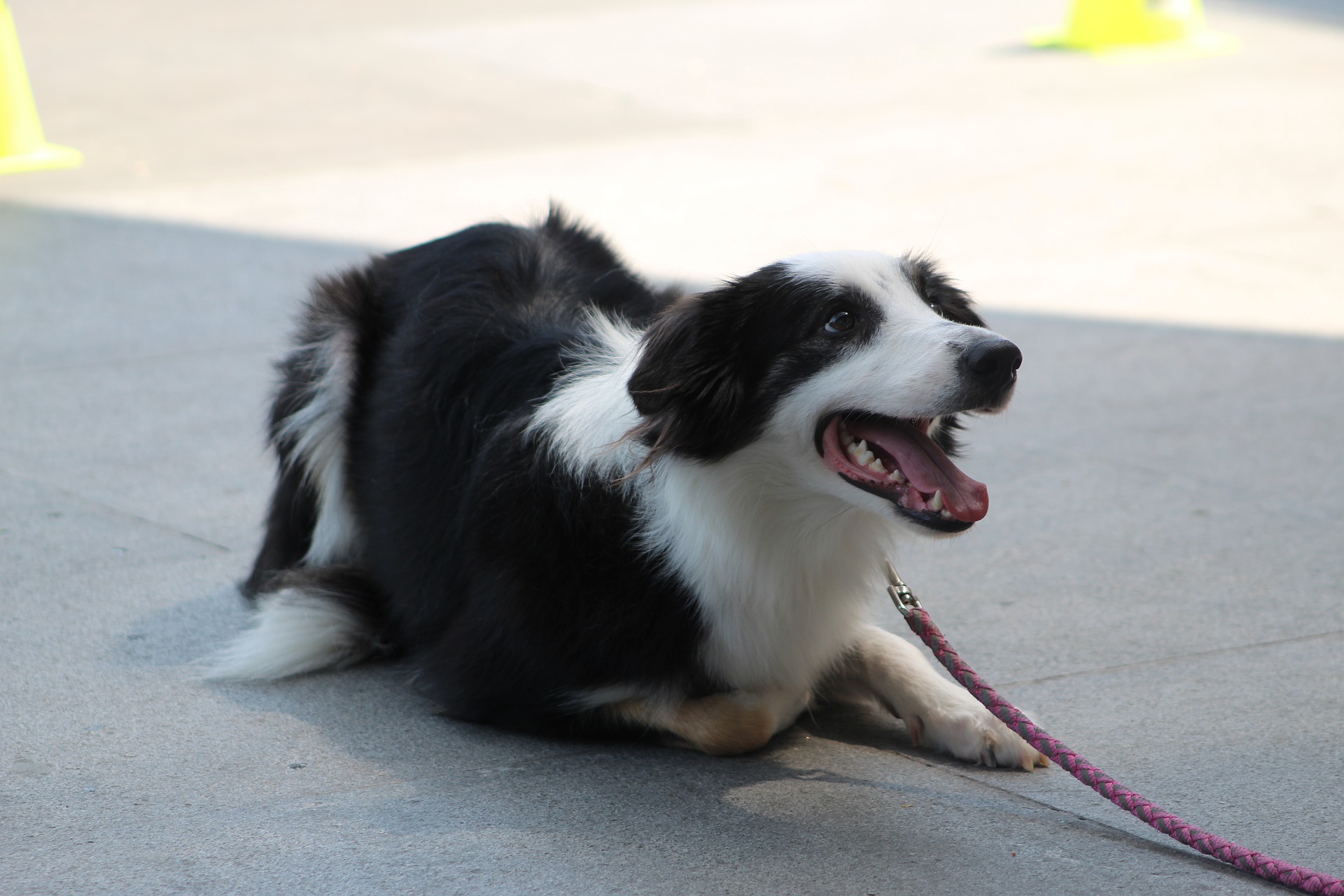
Click when your dog does something remotely close to what you want it to do. Then reward with a treat every so often. The timing of the click is crucial. They must know what they are doing right. This will motivate them to do the action again in the future.
No. 3 - Getting Rid of Bad Behavior
As well as scolding your dog when they are behaving badly, you should click for the good behavior. For example, when visitors come into the house you should click when your dog acts calmly and isn't jumping on them. Your dog will recognize the click and know to stay calm, in hopes of getting a treat!
No. 4 - Do Not Mix Scolding with Clicker Training
If your dog isn’t behaving or if you get mad, stop the training and try again another time. If you give out to your dog while training with a clicker this could confuse them and cause them to think the clicker is a bad thing. You should be careful with this as your dog could lose confidence. Also, if you aren’t getting anywhere with a particular behavior or skill, this could be because you aren’t clicking at the right time. As said before, the timing of the clicker is crucial. If you click after the behavior is done, your dog could think the thing they are doing right is stopping what they are doing, therefore they won’t do it anymore. Click as the action is being portrayed.
No. 5 - Add a Cue Word
Over time, your dog should eventually do the tricks in hopes for you to click or to get a reward like a treat. Once you get to this stage, you should figure out a cue word or a hand action you want your dog to obey to do the action. You should only click if the behavior is done after you say the cue word and ignore the action if you don’t say the cue word. This will teach your pooch that you only need the action to be done when you say so.

